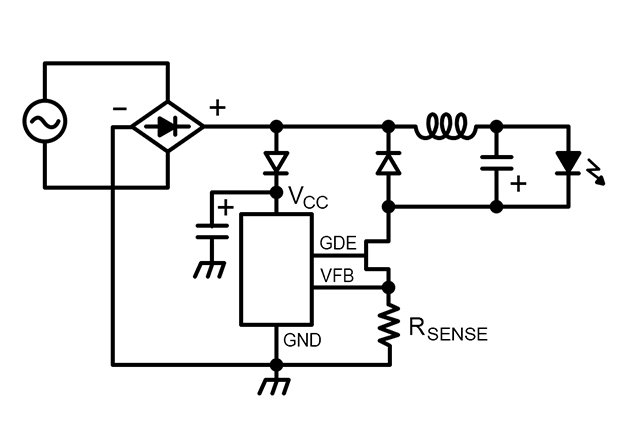![]()
HB-LED manufacturers do not sell bare die. There are several reasons for this, not least being that they are too small to be of any use except, perhaps, as a substitute for pepper in overpriced restaurants. The solution that has evolved uses ceramic tiles called sub-mounts. The die is attached to one side of the tile with all necessary electrical connections made and a small lens is popped on top. On the underside of the tile are provided solder pads, connected to the die by vias. The solder pads permit the sub-mount and hence the HB-LED, to be attached to a PCB just like any other surface mount component.
Alumina is the ceramic of choice for LED sub-mounts. It is cheap, easy to drill and metallise, and has reasonable thermal conductivity (20-30 W/mK). It is also white. This improves luminaire efficiency by reflecting itinerant photons to beneficial directions.
Due to technical advances, HB-LED die are getting smaller and brighter. These two trends mean that both the amount of heat and the heat flux (W/mm2) produced by HB-LEDs is increasing. And LEDs do not like it hot. High temperatures reduce life, degrade the light quality and decrease the efficiency of light production which, incidentally, causes the LEDs to run hotter still. But, as the power rating and power density of HB-LEDs climbs, alumina is unable to remove the heat fast enough. This has forced the industry to switch to aluminium nitride ceramic and caused sleepless nights for many an engineer and purchasing manager.
Aluminium nitride makes an excellent sub-mount for HB-LEDs on just one criteria; its thermal conductivity is nearly six times improved at 160 W/mK. But, it is much more difficult to manufacture and process, resulting in a price premium roughly 10 times alumina! And, to cap it all, aluminium nitride is available in precisely one color. Grey. Despite all the disadvantages, the need for high thermal conductivity sub-mounts has resulted in such a wholesale switch from alumina to aluminium nitride that the supply side is close to capacity. This means future pricing is going in one direction only.
Next-generation HB-LEDs will need sub-mounts with even greater thermal conductivity. Beryllium oxide would fulfill the need (330 W/mK), were it not for the minor annoyances that it is 10 times the price of aluminium nitride and ever so slightly toxic. Time for some lateral thinking.
Metals, like aluminium, are really good thermal conductors (205 W/mk) and readily available as thin, flat, sheets. However you can’t put circuits directly on a metal tile because everything would short. The solution is a dielectric surface coating and ceramics, like alumina, are excellent dielectrics. So, the ideal sub-mount for an HB-LED is a thick metal core to provide the thermal conductivity with a thin ceramic coating to provide the electrical isolation. Provided the ceramic coating is thin the thermal resistance of the layer will be negligible. Aluminium can be converted to Nanoceramic alumina in an electrochemical cell. The conversion can even be done on the sidewalls of holes making possible formation of vias. The result is a mechanically robust sub-mount, with thermal conductivity close to the best aluminium nitride available, but at a fraction of the cost and with no supply chain constraints. It should be no surprise that HB-LED manufacturers are busy tooling-up to use this new material.
While Nanoceramic has the interesting property that means the color can be tailored from white to black, there is no truth to the rumor that it can be purchased in 50 shades of grey to suit the intended disposition of the luminaire.



